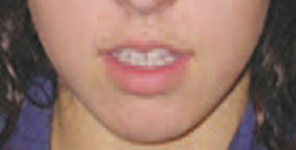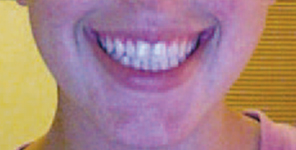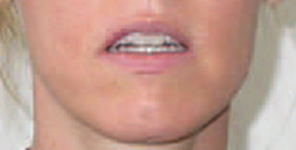Hypotonic (Weak) Masseters

The masseters are both chewing muscles and postural muscles to keep the jaw in place during activities such as walking, running or jumping. The masseters are designed to crush food between the teeth, so when the teeth are in malocclusion and do not touch, the masseters are de-acti- vated. In severe case they lose mass and the ability to chew or to support the mandible, with the mouth hanging open. Weak masseters are often present in TMJ disorders.
OMT
HELPS

By using flexible tubes or wafers, masseters can be “retrained” to chew properly and to assist the tongue and the lips in providing the proper jaw posture at rest. However, in case of a significant malocclusion, an orthodontic intervention may be necessary before OM treatment.
IF NOT
TREATED

The proper position of the jaw at rest is very important for the health of the TMJ and its position depends in part by the activation of the masseters. Weak masseters also impact dental occlusion, chewing, swallowing and the function of the temporalis muscles, which become hypertonic and painful.

11. Hypotonic (Weak) Masseters
–Miles TS. Postural control of the human mandible. Archive of Oral Biology. 2007. Apr 52(4):347-52. Epub 2007 Jan 25.
–Scutter SD & Turker KS. e role of the muscle spindles in human masseters. Human Movement Science, 2001. Nov. 20(4-5): 489-497.